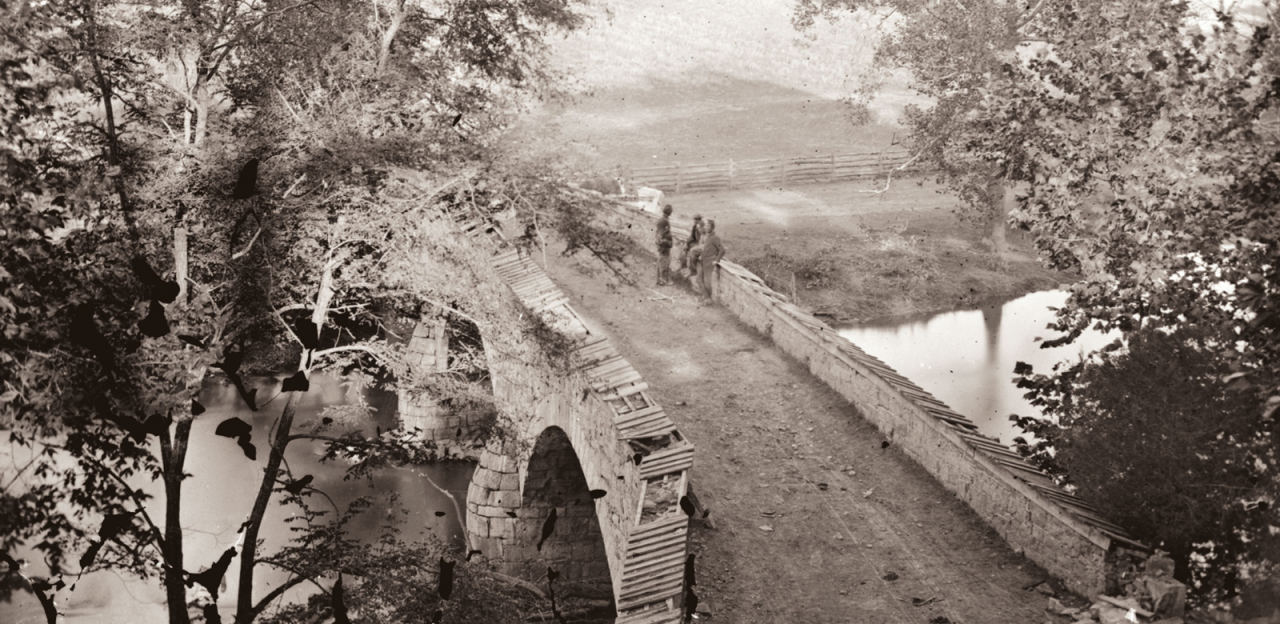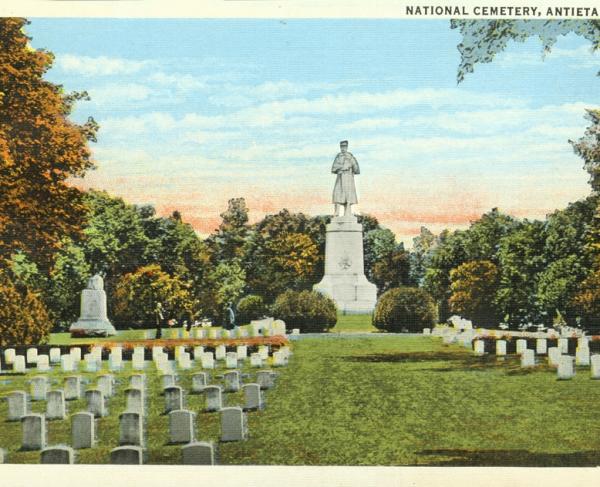The Pivotal Moment of the Maryland Campaign: The Case for Antietam

Garry Adelman, for Hallowed Ground
In our Fall 2012 issue of Hallowed Ground, four historians made a case for why their respective battle was the pivotal moment of the 1862 Maryland Campaign. Garry Adelman, the Civil War Trust's Director of History and Education argued for the Battle of Antietam.
In labeling the Battle of Antietam as the pivotal event of the Maryland Campaign, it is tempting to simply declare its greatness and importance based upon sheer size and notoriety. It was not only the bloodiest battle of the Maryland Campaign — with four times more soldiers killed and wounded than in the campaign’s other fights combined — but the bloodiest single day of the Civil War. Antietam is the most well-known of the battles in Lee’s first invasion of the North, has the most battlefield land preserved and attracts the most battlefield visitors.
But size, cost and notoriety are not what make Antietam the pivotal event in the Maryland Campaign. Rather, it is what happened because of it — Gen. Robert E. Lee’s return to Virginia, President Lincoln’s issuance of the Preliminary Emancipation Proclamation, the abrupt reduction in the likelihood of European intervention and, indeed, a change in no less than the purpose and conduct of the American Civil War. While South Mountain was an important reversal after months of Union retrograde movements, Harpers Ferry resulted in the largest mass surrender of Union troops during the war, and Shepherdstown was a fierce rearguard action that helped to facilitate the ongoing war, none can claim to have been the most vital, the most critical or the most crucial event of the Maryland Campaign. None of these can claim to have had remotely the same degree of impact upon the Civil War or American history.
Establishing the pivotal historical incident within a larger group of events is not about theorizing what might have happened; it is about scrutinizing what actually happened. Therefore, discussing what might have happened had Union soldiers not found Special Orders 191, had Union Brig. Gen. George McClellan not pushed toward the South Mountain passes, had the South not captured Harpers Ferry, or had the Union been more aggressive in its pursuit after Antietam is irrelevant. But by examining what DID happen, the Battle of Antietam is clearly established as the pivotal moment of the Maryland Campaign.
On September 17, 1862, the Army of the Potomac mounted a series of powerful assaults against the Southern position near Sharpsburg, Md. The morning assault and vicious Confederate counterattacks swept back and forth through Miller’s Cornfield and the West Woods. Later, towards the center of the battlefield, Union assaults against the Sunken Road pierced the Confederate center after a terrible struggle. Late in the day, the third and final major assault by the Union army pushed over a bullet-strewn stone bridge at Antietam Creek. Just as the Federal forces began to collapse the Confederate right, the timely arrival of reinforcements from Harpers Ferry stemmed the Union tide, and the bloodiest single day in American military history ended in a draw.
Prior to Antietam, Lee’s army seemed an inexorable tide, rolling into the North on the strength of victories during the Seven Days and at Manassas. The loss at South Mountain disrupted Lee’s operations and set up the great battle to come, but it did not induce him to retreat or surrender his offensive. Certainly, Lee did not return to Virginia because of the unprecedented Union surrender at Harpers Ferry, and he was already back on southern soil when he won at Shepherdstown. What, then, compelled him to seek the far shore of the Potomac except the tremendous losses he suffered and the poor strategic position into which he was forced at the Battle of Antietam?
President Lincoln had been holding on to his Preliminary Emancipation Proclamation for months before the Battle of Antietam. He was awaiting a victory, or something he could call a victory, so as to issue his watershed war measure from a position of strength. Secretary of the Navy Gideon Welles wrote that Lincoln had vowed “if God gave us a victory in the approaching battle, he would consider it an indication of Divine will, and that it was his duty to move forward in the cause of emancipation." Antietam, not South Mountain, was that victory, as even the State of Maryland, stewards of the South Mountain Battlefield, says on its website: “The Battle of Antietam, the bloodiest one-day battle in American History, forced Lee to retreat back to Virginia. It also provided President Abraham Lincoln with the opportunity to issue the Emancipation Proclamation, which ultimately led to the abolishment of slavery in the United States.”
When Lincoln issued the proclamation on September 22, 1862, it was despite embarrassing losses at Harpers Ferry and Shepherdstown. The result of Antietam had irrevocably changed the war’s very nature, leaving no middle ground. Many, including Lee and McClellan, wrote of this tectonic shift so neatly summarized by Lincoln in his annual message to Congress: “We shall nobly save, or meanly lose, the last best hope of earth.” The Civil War was no longer solely about restoring the Union, it had become a war for or against slavery.
Antietam’s effects did not end there, either — there were political consequences as well. While Democrats gained seats in the House in the fall elections that followed the Maryland Campaign, it was far fewer than expected, preventing them from retaking the majority. On a broader scale, historians may argue about the likelihood of actual European military intervention on the side of the Confederacy prior to Antietam, but all, from participants in the Civil War to modern scholars, agree that after Antietam, Lee’s return to Virginia and the issuing of the Emancipation Proclamation, Europe’s will to intervene was deflated to the point of practical nonexistence. The Confederacy was on its own.
The exercise of determining a pivotal moment forces historians and enthusiasts to reexamine myths, misunderstandings and decades of historical interpretation. It is a worthwhile endeavor and, in many cases, we find that the historical events we hold dear are not as significant as we thought. We need to do away with what we learned and start anew. This is not one of those instances. Antietam has long been considered the pivotal event in the Maryland Campaign, and so it shall remain. The Battle of Antietam has both the notoriety of a wildly significant event while also having the historical documentation of actually being one. It is not only the pivotal moment of the Maryland Campaign, but also must rest on the shortest list of pivotal moments of the entire Civil War.
Learn More About the Pivotal Moments of the Maryland Campaign: The Case for South Mountain | The Case for Harpers Ferry | The Case for Shepherdstown
Garry Adelman is the director of history and education at the Civil War Trust and the author, coauthor or editor of more than 40 Civil War books and articles, including Antietam: Then & Now.
Related Battles
12,401
10,316


